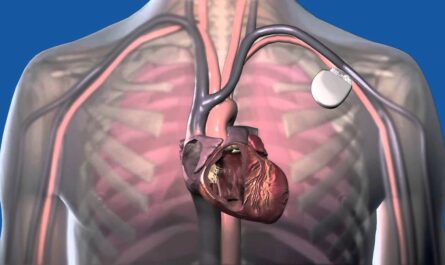
Rheumatoid arthritis (RA) is an autoimmune disease that causes chronic inflammation of the joints. Left untreated, it can lead to long term damage of the joints and decreased quality of life. Confirming an RA diagnosis accurately and efficiently is important to begin appropriate treatment as soon as possible and prevent further damage. There are several diagnostic tests that are used by rheumatologists to diagnose RA.
Blood Tests
Several blood tests are used in the initial evaluation and diagnosis of RA. The most common blood tests include:
Rheumatoid Factor (RF) Test
RF is an antibody that is produced by the immune system in 80% of people with RA. However, RF can also be present in some people without RA. A positive RF test supports an RA diagnosis but is not definitive on its own.
C-Reactive Protein (CRP) and Erythrocyte Sedimentation Rate (ESR) Tests
CRP and ESR are both measures of inflammation in the body. Elevated levels of either CRP or ESR are nonspecific and can be seen in many inflammatory conditions, not just RA. However, persistently elevated levels over time suggest inflammation consistent with RA.
Get more insights on this topic: https://www.coherentmarketinsights.com/market-insight/rheumatoid-arthritis-diagnostic-tests-market-3716
Anti-CCP Antibody Test
Anti-CCP (anti-cyclic citrullinated peptide) is a highly specific antibody for RA, found in 60-70% of RA patients. A positive anti-CCP result strongly indicates that a patient’s joint symptoms are due to RA rather than another condition. Combining anti-CCP testing with RF can improve the accuracy of diagnosis.
Complete Blood Count (CBC)
A CBC test evaluates various components of the blood, such as red blood cell count, white blood cell count, platelet count, and hemoglobin levels. Anemia or abnormal white blood cell counts could point to an underlying inflammatory process like RA.
Joint Examination and Imaging Tests
Physical examination of the joints by a rheumatologist is important to evaluate signs and symptoms of arthritis like joint swelling, tenderness, limited range of motion, and deformities. Imaging tests provide additional objective information:
X-rays
X-rays can reveal bone erosion, cartilage loss, and bony abnormalities characteristic of long-standing RA. While X-rays are not sensitive enough to detect early damage, they are helpful for monitoring disease progression over time.
Ultrasound
Ultrasound is able to detect synovitis (joint inflammation) by viewing signals returned from soft tissues and fluids. It is more sensitive than physical exam alone for detecting small inflamed joints.
Magnetic Resonance Imaging (MRI)
An MRI provides highly detailed images of soft tissues like cartilage, tendons and ligaments. MRIs can detect inflammation and early erosions in RA before they are visible on X-ray, aiding diagnosis.
Synovial Biopsy or Aspiration
When joint symptoms suggest RA but blood tests and imaging are inconclusive, a rheumatologist may perform a synovial biopsy or joint aspiration. During a synovial biopsy, a small amount of synovial tissue (joint lining) is removed arthroscopically for examination under a microscope. Joint aspiration involves removing synovial fluid from an inflamed joint with a needle for analysis. Both procedures aim to detect inflammatory cells characteristic of RA.
Rheumatologists Use Multiple Factors for Diagnosis
While blood tests and imaging provide objective information, an accurate RA diagnosis requires correlating these results with a patient’s full clinical picture – including symptoms, physical exam findings, disease pattern and response to initial treatment. By considering multiple diagnostic factors together, rheumatologists can determine if a patient’s signs and symptoms are likely due to RA versus another condition with similar manifestations like osteoarthritis or tendonitis. Meeting several diagnostic criteria sets, such as the American College of Rheumatology (ACR)/European League Against Rheumatism (EULAR) criteria, increases diagnostic certainty for RA.
Early Diagnosis Facilitates Effective Treatment
An expedient and accurate diagnosis is important because early treatment with disease-modifying antirheumatic drugs (DMARDs) improves long-term outcomes by slowing or preventing further joint damage and disability. DMARDs work best when started as soon as RA is confirmed, so diagnostic tests aim to detect RA early – even before radiographic changes occur. While diagnosis may require evaluating multiple tests overtime, prompt rheumatologist assessment provides the best chance of confirming RA status and initiating treatment to optimize prognosis. Overall, diagnostic evaluations serve the critical goal of distinguishing RA from other joint diseases to allow targeted RA management from the onset of symptoms.
*Note:
1. Source: Coherent Market Insights, Public sources, Desk research
2. We have leveraged AI tools to mine information and compile it



